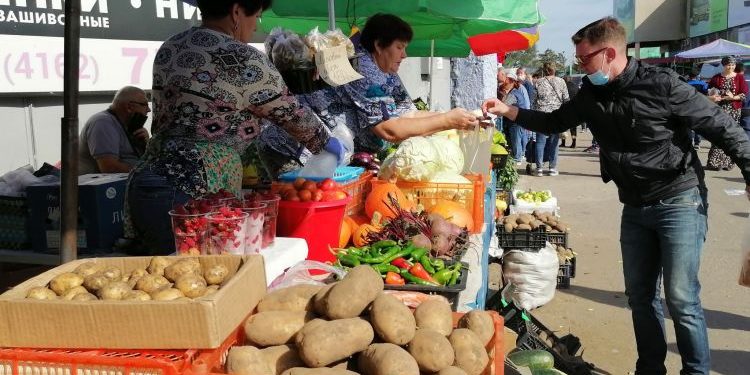The Amur potatoes of the new harvest overtook imported tubers in price, and the first batches of garden strawberries, on the contrary, turned out to be cheaper than imported ones.
In the Amur region, the local harvest season has begun. The stores received the first young potatoes, but their retail price traditionally “goes off scale”: 125-150 rubles per kilogram.
For comparison, tubers from Egypt in local stores cost about 110 rubles, potatoes brought from Kazakhstan, according to the sellers, will cost even less – 90 rubles. It is difficult for the layman to understand what the price is made up of: the distance in a straight line from Blagoveshchensk to Almaty is almost 3.9 thousand kilometers, to Cairo – about 7.9 thousand kilometers. And the nearest Amur potato fields are just a couple of kilometers from the regional center. At the same time, for many years, the Amur region has remained the leader in the potato industry in the Far East, and part of the “second bread” is exported to neighboring regions.
Garden strawberries and wild strawberries, grown by Amur residents on household plots, appeared on sale. A liter, or 600 grams, of local berries was valued by sellers at 400-500 rubles, and this time Amur products win in price. So, 100 grams of strawberries from Primorye in the nearest supermarket cost 124 rubles, a berry from China is a ruble more expensive.
The main supplier of fruits and vegetables in the Amur region is China. However, for a long time there was a ban on the supply of stone fruits, pome fruits and citrus fruits from the Middle Kingdom, and the import of other fruits and vegetables was temporarily suspended due to the epidemiological situation. Vegetables and fruits from other countries have become an alternative to Chinese food. The choice is quite diverse even now: pears from Argentina and Serbia costing 270-300 rubles per kilogram, grapes from India, Peru or Turkey, watermelons from Iran and Uzbekistan, pineapples from Costa Rica. Avocados arrived in the Amur region from Kenya, Spain, Turkey and Peru.
Today, fruits and vegetables from the Middle Kingdom are gradually returning to the shelves of Amur stores. The first and so far the only batch of Chinese apples has already arrived in the Amur region “by land”, bypassing the border with Primorsky Krai. Chinese lemons were delivered through Transbaikalia, the regional department of the Rosselkhoznadzor said.
Transportation along the Amur has also been resumed. More than 1,000 tons of fruits and vegetables were imported from Heihe by barge to Blagoveshchensk. This method of transportation has been used for the second year already and has proven to be the most optimal in the changing sanitary and epidemiological situation, the department of the Federal Service for Phytosanitary Surveillance in the Amur Region reported.
The leading positions in the assortment of the first delivery are occupied by vegetables: about 800 tons. Onions, cabbage, tomatoes, cucumbers, carrots, peppers, beets, eggplants and marrows, garlic and other crops have been imported. About 111.5 tons of fruits and berries were delivered, mainly watermelons – 100 tons. Melons, mangoes, pineapples and grapes also arrived.
For exotic lovers, there are now mangosteens worth more than 1.5 thousand rubles per kilogram and carambola on store shelves – these fruits are also brought from China. Almost 2 thousand rubles will have to be paid for a kilogram of blueberries from China. This berry also grows in the Amur swamps, but its season will come only in mid-July – early August.
The Amur region, in turn, exports soybean oil and soybeans to China – the products pass through the checkpoint on the cross-border bridge. But the “transfer” of a number of food products from the Middle Kingdom across the bridge across the Amur is still banned.








